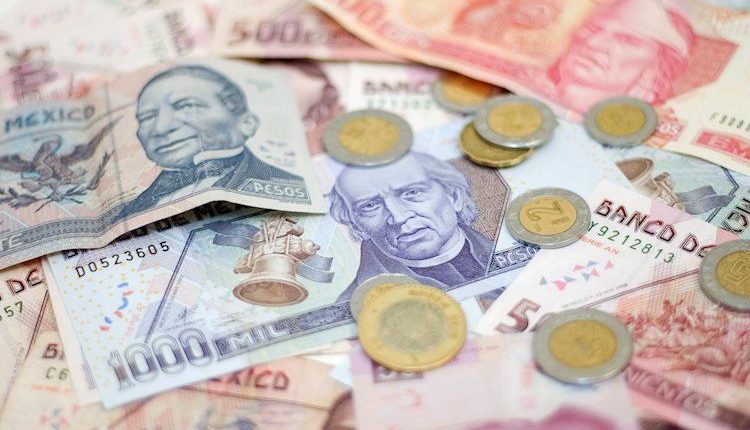- Mexican Peso recovered from Monday’s dip, with USD/MXN trading around 17.50.
- Banxico anticipates maintaining the overnight cash rate unchanged at 11.25%, with market pricing in a steady approach for the upcoming policy decisions.
- Federal Reserve’s pause in rate hikes last week has led to a 3.75% appreciation of the Peso against the Dollar.
Mexican Peso (MXN) stages a comeback, recovering from Monday’s losses against the US Dollar (USD), which was bolstered by higher Treasury bond yields in the United States (US). A scarce economic calendar in Mexico keeps traders eyeing the Bank of Mexico’s (Banxico) upcoming monetary policy decision, with traders expecting no change to the overnight cash rate, which is currently sitting at 11.25%. Therefore, the USD/MXN is seen hovering below the 17.50 area, the current spot price, losing 0.38% on the day.
Banxico has two monetary policy decisions left for the rest of 2023. Their officials have struck the markets with hawkish remarks, stating that rates need to be at the current level for a longer period. Contrarily, last Wednesday’s Federal Reserve’s (Fed) decision to keep rates unchanged ignited speculations the Fed has finished its tightening cycle. This bolstered the Peso’s appreciation of 3.75% ever since, as the USD/MXN has plummeted from 18.12 to 17.45.
Lately, the Minnesota Fed President Neil Kashkari pushed back against the market’s ‘dovish’ perception, saying that the economy’s robustness raises the question of whether “is (policy) as tight as we (Fed) assume it currently is.” He added an uptick in inflation would warrant further tightening. On the dovish side, Chicago Fed President Austan Goolsbee stated that progress in inflation has been made and added the conversation of how high rates need to be, which could shift to how long it would take to keep rates at this level.
Daily digest movers: Mexican Peso boosted by falling US bond yields
- The US 10-year Treasury bond yield drops five basis points, sits at 4.598%, after opening at around 4.64%.
- The CME FedWatch Tool shows odds of additional tightening plunging, as participants see a 20% chance for a 25-bp hike in January 2024. On the other side, rate cuts have begun to be priced in, with odds at 51.05% for a May 2024 25-bp rate cut.
- On the data front, the US trade deficit widened 4.9% to $61.5 billion from $58.7 billion, more than the foreseen $59.9 billion.
- Ahead in the calendar will feature more Fed speakers, with Governors Michael Barr, Christopher Waller, and Kansas City Fed President Jeffrey Schmidt.
- Mexico S&P Global October Manufacturing PMI printed at 52.1, above September’s 49.8.
- Mexico’s Gross Domestic Product grew by 0.9% QoQ in the third quarter on its preliminary reading, above the previous quarter and estimates of 0.8%.
- On a yearly basis, Mexico’s GDP for Q3 expanded by 3.3%, above forecasts of 3.2% but trailing the previous 3.6%.
- On October 24, Mexico’s National Statistics Agency, INEGI, reported annual headline inflation hit 4.27%, down from 4.45% at the end of September and below forecasts of 4.38%.
- Mexico’s core inflation rate YoY was 5.54%, beneath forecasts of 5.60%.
- The Bank of Mexico (Banxico) held rates at 11.25% in September and revised its inflation projections from 3.50% to 3.87% for 2024, which remains above the central bank’s 3.00% target (plus or minus 1%). The next decision will be announced on November 9.
Technical Analysis: Mexican Peso buyers in charge as they eye the 100-day SMA
The USD/MXN daily chart portrays the pair as bearish, resuming its downtrend despite having undergone a slight recovery on Monday. Even though the pair formed a Japanese hammer candlestick pattern at Friday’s lows, current price action suggests the exotic pair could consolidate at around current price levels ahead of Banxico’s decision.
Hence, if the pair remains sideways, look for key support levels at Monday’s low of 17.40, followed by the 100-day Simple Moving Average (SMA) at 17.31. A breach of the latter will expose the 17.00 figure before the pair aims to test the year-to-date (YTD) low of 16.62.
On the flip side, the USD/MXN first resistance level would be the 50-day SMA at 17.65, followed by the 200-day SMA at 17.69. Once those levels are broken, look out for a challenge of the 18.00 psychological mark.
Banxico FAQs
The Bank of Mexico, also known as Banxico, is the country’s central bank. Its mission is to preserve the value of Mexico’s currency, the Mexican Peso (MXN), and to set the monetary policy. To this end, its main objective is to maintain low and stable inflation within target levels – at or close to its target of 3%, the midpoint in a tolerance band of between 2% and 4%.
The main tool of the Banxico to guide monetary policy is by setting interest rates. When inflation is above target, the bank will attempt to tame it by raising rates, making it more expensive for households and businesses to borrow money and thus cooling the economy. Higher interest rates are generally positive for the Mexican Peso (MXN) as they lead to higher yields, making the country a more attractive place for investors. On the contrary, lower interest rates tend to weaken MXN. The rate differential with the USD, or how the Banxico is expected to set interest rates compared with the US Federal Reserve (Fed), is a key factor.
Banxico meets eight times a year, and its monetary policy is greatly influenced by decisions of the US Federal Reserve (Fed). Therefore, the central bank’s decision-making committee usually gathers a week after the Fed. In doing so, Banxico reacts and sometimes anticipates monetary policy measures set by the Federal Reserve. For example, after the Covid-19 pandemic, before the Fed raised rates, Banxico did it first in an attempt to diminish the chances of a substantial depreciation of the Mexican Peso (MXN) and to prevent capital outflows that could destabilize the country.
Read the full article here

